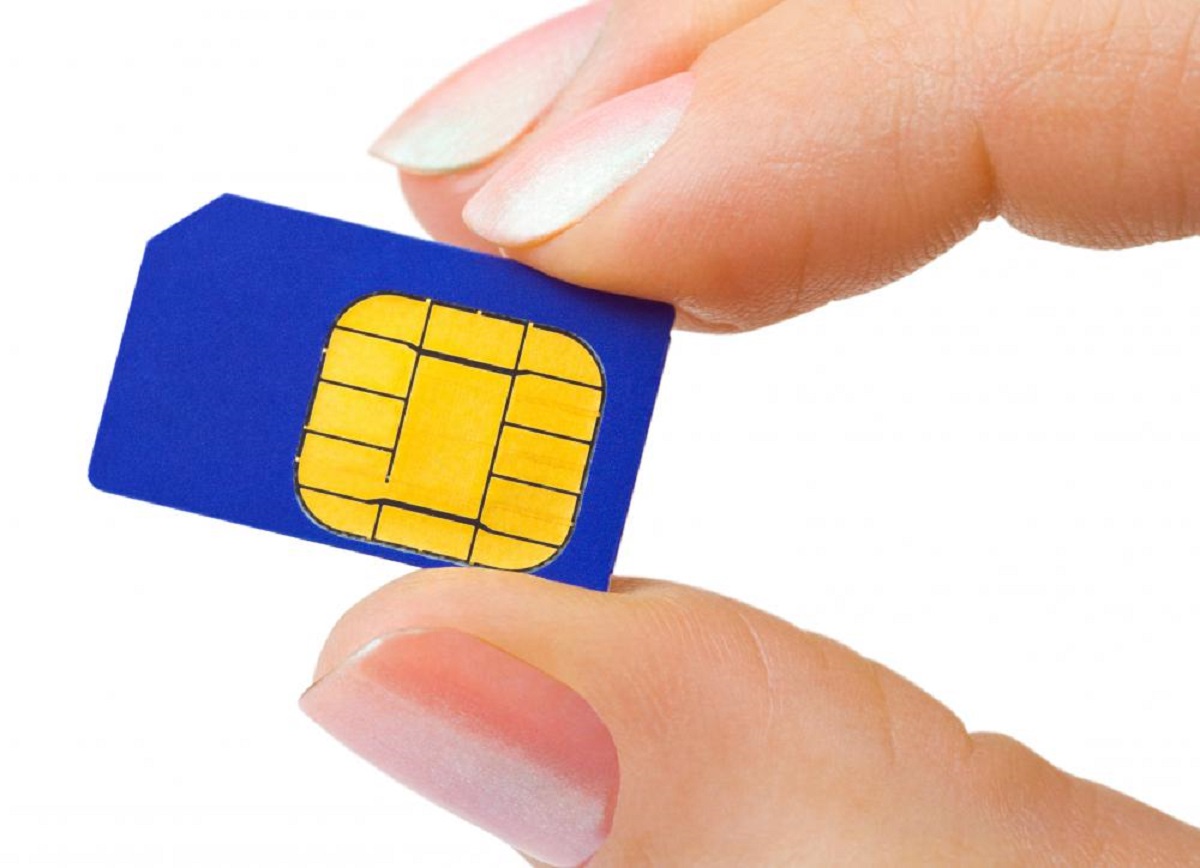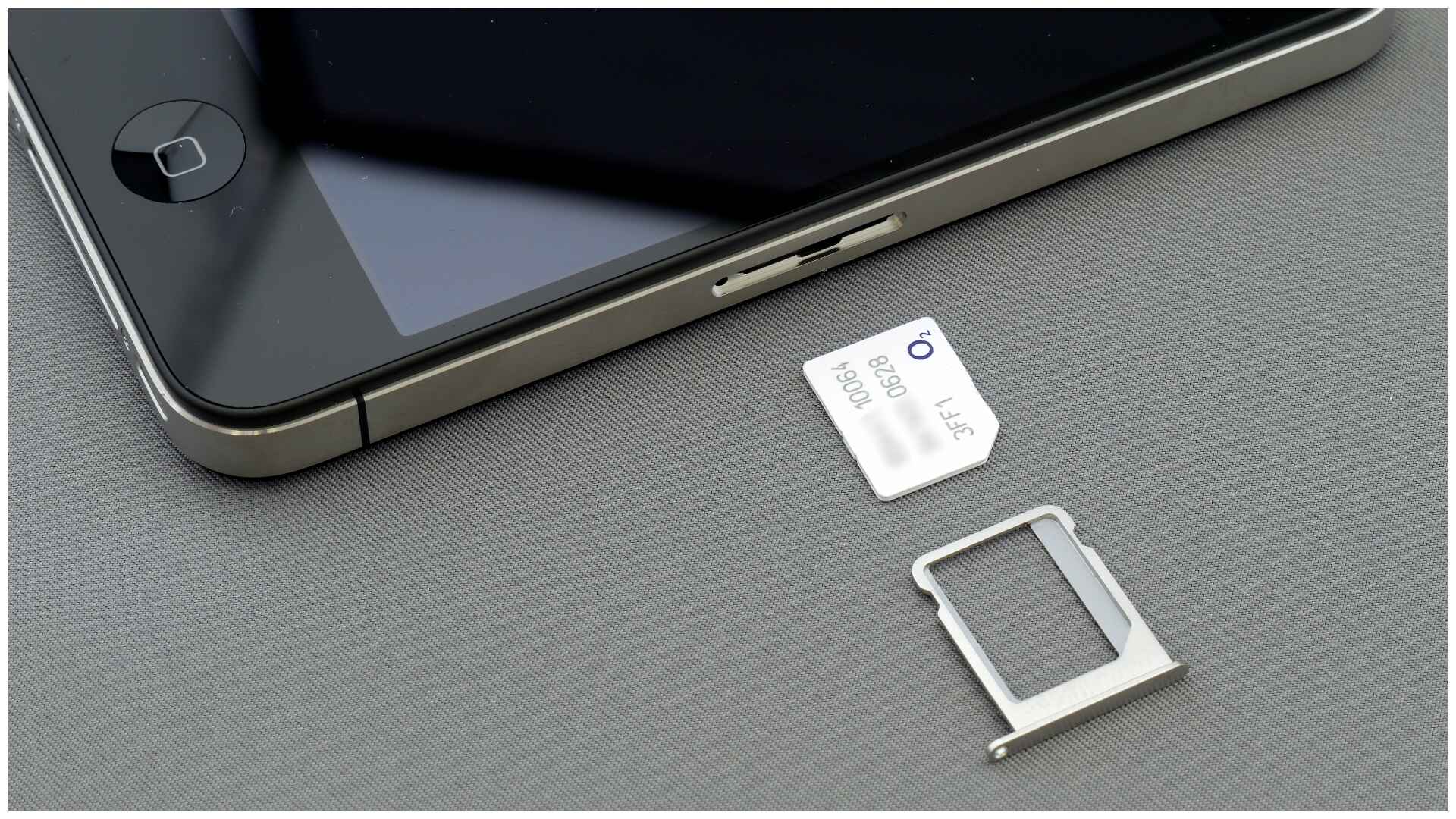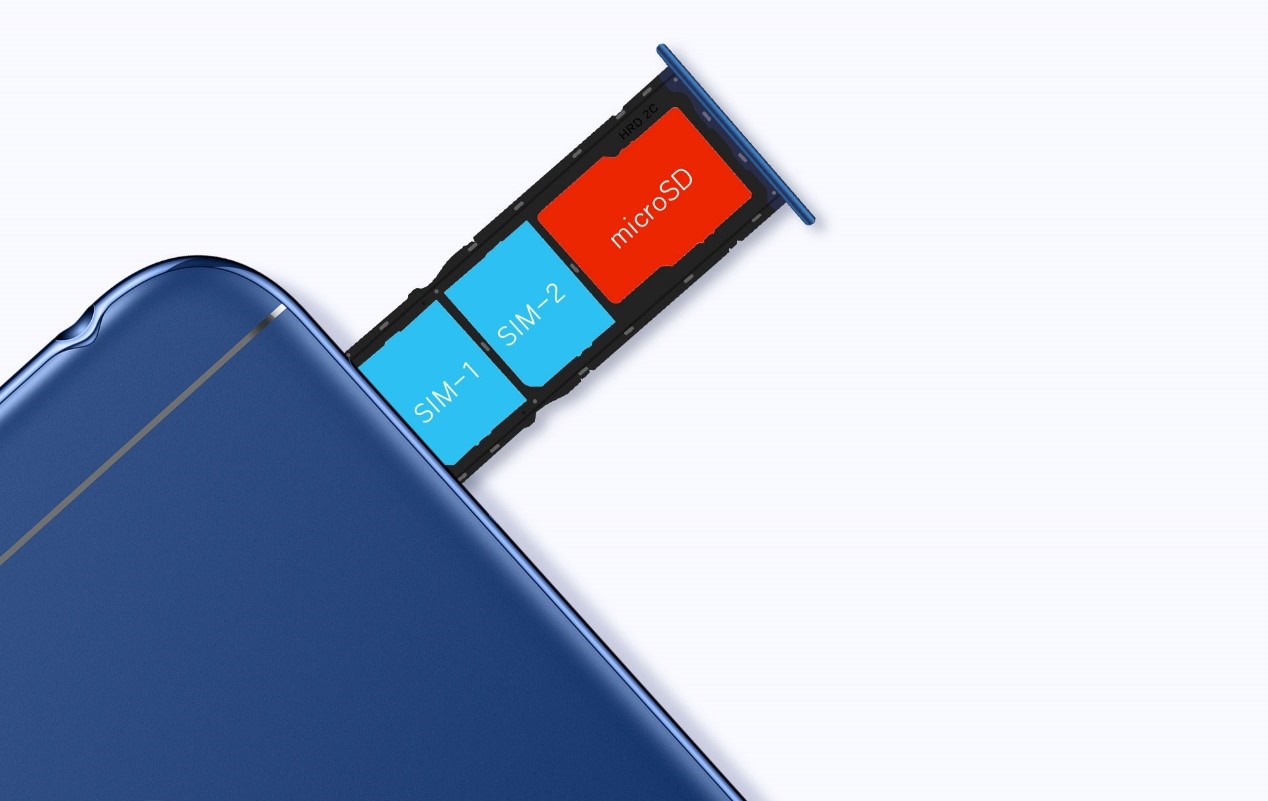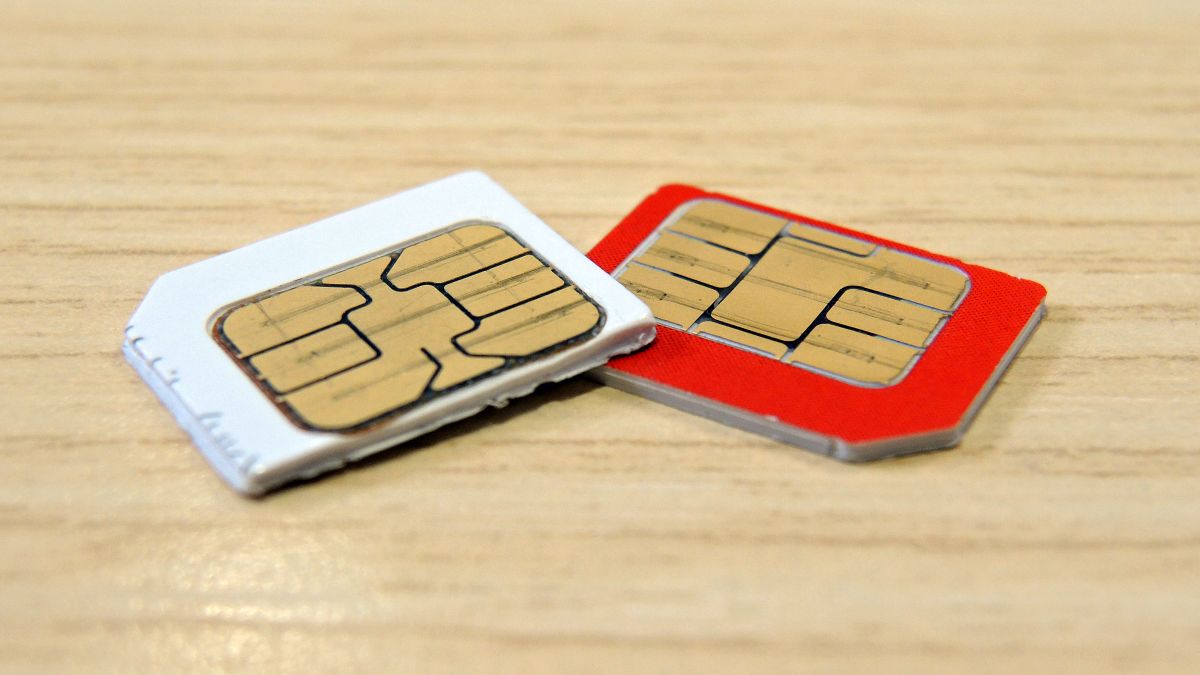Introduction
The rapid evolution of mobile technology has revolutionized the way we communicate, connect, and access information. In recent years, the introduction of eSIM (embedded SIM) technology has garnered significant attention, offering a seamless and versatile approach to mobile connectivity. Unlike traditional SIM cards, which are physical, removable chips, eSIMs are integrated directly into the device, eliminating the need for a physical SIM card.
As mobile devices continue to become more compact and streamlined, the demand for efficient and adaptable connectivity solutions has surged. This has paved the way for eSIM technology to emerge as a viable and innovative alternative to traditional SIM cards. With eSIMs, users can enjoy the convenience of managing multiple mobile plans and switching between carriers without the hassle of physically swapping SIM cards.
The adoption of eSIM technology represents a pivotal shift in the mobile communication landscape, empowering users with greater flexibility and convenience. As the digital ecosystem continues to evolve, understanding the nuances and capabilities of eSIM technology is becoming increasingly essential for consumers and businesses alike.
In this article, we will delve into the intricacies of eSIM technology, exploring its activation process, benefits, limitations, and the innovative methods it offers for making calls without a physical SIM card. By the end of this comprehensive exploration, readers will gain a deeper understanding of how eSIM technology is reshaping the mobile connectivity experience.
What is an eSIM?
An eSIM, short for embedded SIM, is a digital SIM card that is integrated directly into a mobile device, eliminating the need for a physical, removable SIM card. This innovative technology represents a significant departure from the traditional SIM card approach, offering a more streamlined and versatile method of managing mobile connectivity.
Unlike conventional SIM cards, which require physical installation and removal, eSIMs are built into the device during manufacturing, enabling users to activate cellular plans without the need for a physical SIM card. This integration not only contributes to the sleek and compact design of modern devices but also facilitates greater flexibility in managing mobile subscriptions.
One of the key distinguishing features of eSIM technology is its ability to store multiple mobile network profiles simultaneously. This means that users can seamlessly switch between different carriers and plans without the inconvenience of physically swapping SIM cards. The process of switching between profiles is typically facilitated through the device's settings, offering a user-friendly and efficient experience.
eSIMs are designed to be remotely programmable, allowing users to activate and manage cellular plans directly from their devices. This remote provisioning capability empowers users to connect to a mobile network of their choice without the need to acquire a physical SIM card from a specific carrier. Additionally, eSIM technology enables the easy transition between different mobile plans, making it an attractive option for frequent travelers and individuals seeking flexible connectivity options.
Furthermore, eSIM technology has gained traction across a wide range of devices, including smartphones, tablets, smartwatches, and other Internet of Things (IoT) devices. This widespread integration underscores the versatility and adaptability of eSIMs, positioning them as a fundamental component of the evolving mobile ecosystem.
In essence, eSIM technology represents a pivotal advancement in the realm of mobile connectivity, offering users a seamless and dynamic approach to managing cellular subscriptions. As the digital landscape continues to evolve, eSIMs are poised to play a central role in shaping the future of mobile communication and connectivity.
How to activate an eSIM
Activating an eSIM involves a straightforward process that varies slightly depending on the device and carrier. The following steps provide a general overview of how to activate an eSIM:
-
Check Device Compatibility: Before initiating the eSIM activation process, it is essential to ensure that the mobile device supports eSIM technology. Most modern smartphones and other compatible devices are equipped with eSIM functionality. However, it is advisable to verify the device's specifications and compatibility with eSIMs.
-
Contact the Mobile Carrier: Once device compatibility is confirmed, users can proceed to contact their preferred mobile carrier to inquire about eSIM activation. The carrier will provide specific instructions and guidance on how to activate an eSIM for their network. It is important to note that not all carriers support eSIM technology, so users should verify this with their carrier.
-
Obtain an eSIM Activation Code: The mobile carrier will issue an eSIM activation code, which is essential for provisioning the eSIM with the desired cellular plan. This code may be provided in the form of a QR (Quick Response) code or a numeric code, depending on the carrier's provisioning process.
-
Access Device Settings: Upon receiving the eSIM activation code, users can navigate to the device's settings menu and select the option to add a new cellular plan or activate the eSIM. This process may vary slightly depending on the device's operating system (e.g., iOS, Android) but generally involves accessing the "Mobile Data" or "Cellular" settings.
-
Scan or Enter the Activation Code: If the eSIM activation code is in QR code format, users can utilize the device's camera to scan the code and initiate the activation process. Alternatively, if the code is numeric, it can be manually entered into the device to provision the eSIM with the designated cellular plan.
-
Complete Activation Process: After scanning or entering the activation code, the device will prompt users to confirm the eSIM activation. Once confirmed, the eSIM will be provisioned with the selected cellular plan, and users can begin utilizing the eSIM-enabled connectivity.
It is important to note that the specific steps for activating an eSIM may vary based on the device's manufacturer and the carrier's provisioning process. Users are encouraged to follow the instructions provided by their respective carriers and device manufacturers to ensure a seamless eSIM activation experience.
By following these steps, users can effectively activate an eSIM and harness the benefits of this innovative technology, including the ability to manage multiple cellular plans and enjoy the convenience of a SIM card-free mobile experience.
Benefits of using eSIM
The adoption of eSIM technology offers a myriad of compelling benefits, redefining the way users engage with mobile connectivity. Here are the key advantages of using eSIMs:
-
Flexibility and Convenience: eSIMs empower users to effortlessly switch between different mobile carriers and plans without the need to physically replace SIM cards. This flexibility is particularly advantageous for frequent travelers, as it eliminates the hassle of procuring and swapping physical SIM cards when transitioning between regions or countries.
-
Space-saving Integration: By eliminating the need for a physical SIM card slot, eSIM technology contributes to the sleek and compact design of modern devices. This integration optimizes internal space, allowing manufacturers to prioritize other essential components while enhancing the overall aesthetic appeal of mobile devices.
-
Multi-carrier Support: eSIMs enable the storage of multiple mobile network profiles on a single device, facilitating seamless connectivity across various carriers. Users can conveniently manage and activate different cellular plans, catering to their specific needs without being bound to a single carrier.
-
Remote Provisioning: The remote programmability of eSIMs allows users to activate cellular plans directly from their devices, eliminating the requirement to visit physical stores for SIM card acquisition. This remote provisioning capability streamlines the process of connecting to a preferred mobile network, enhancing the overall user experience.
-
Environmental Sustainability: With the reduction of physical SIM card production and distribution, eSIM technology contributes to environmental sustainability by minimizing plastic waste and the carbon footprint associated with traditional SIM card manufacturing and disposal.
-
Enhanced Security: eSIMs offer advanced security features, reducing the susceptibility to physical SIM card tampering or unauthorized removal. This heightened security fortifies the integrity of cellular connectivity, providing users with greater peace of mind regarding the protection of their mobile subscriptions.
-
IoT and Wearable Device Integration: eSIM technology extends its benefits to IoT devices and wearables, enabling seamless connectivity for a diverse range of devices beyond smartphones. This integration facilitates the proliferation of IoT applications and wearable technologies, fostering a more interconnected digital ecosystem.
In essence, the adoption of eSIM technology unlocks a spectrum of advantages, ranging from enhanced flexibility and convenience to environmental sustainability and advanced security features. As the mobile landscape continues to evolve, eSIMs are poised to play a pivotal role in shaping the future of mobile connectivity, offering users a dynamic and adaptable approach to managing their cellular subscriptions.
Limitations of using eSIM
While eSIM technology presents a host of compelling advantages, it is important to acknowledge the limitations and considerations associated with its adoption. Understanding these constraints can provide users with a comprehensive perspective on the implications of leveraging eSIMs for their mobile connectivity needs.
Device Compatibility
One of the primary limitations of eSIM technology pertains to device compatibility. While an increasing number of modern smartphones, tablets, and wearable devices are equipped with eSIM functionality, there are still devices in the market that do not support this technology. As a result, users may encounter restrictions when attempting to leverage eSIMs on certain devices, potentially necessitating the use of traditional physical SIM cards.
Carrier Support
Another consideration revolves around the support for eSIM technology among mobile carriers. Not all carriers have fully embraced eSIM provisioning, which can limit the options available to users seeking to activate eSIMs for their devices. This disparity in carrier support may result in a narrower selection of cellular plans and providers, potentially constraining users' flexibility in choosing their preferred mobile network.
Limited Regional Availability
The availability of eSIM support varies across different regions and countries. While eSIM adoption is steadily expanding, there are regions where the infrastructure and support for eSIM technology may be limited. This regional variability can pose challenges for users who rely on eSIMs for seamless connectivity, particularly when traveling to areas where eSIM provisioning is not widely accessible.
Dual SIM Functionality
For users who require dual SIM functionality on their devices, the limitations of eSIM technology become apparent. While eSIMs offer the flexibility to store multiple mobile network profiles, some devices may only support a single physical SIM card alongside the eSIM. This constraint may restrict users who rely on dual SIM capabilities for managing personal and business lines on a single device.
Device Lock-In
In certain cases, devices that are provisioned with eSIMs may be subject to carrier lock-in, limiting the ease of switching between carriers. This can pose challenges for users who value the freedom to seamlessly transition between different mobile plans and carriers, potentially resulting in a less flexible mobile connectivity experience.
By recognizing these limitations, users can make informed decisions regarding the adoption of eSIM technology, weighing the benefits against the potential constraints. As eSIM technology continues to evolve and garner broader support, these limitations are expected to diminish, fostering a more inclusive and seamless eSIM experience for users across the global mobile landscape.
How to make calls without a physical SIM card
Making calls without a physical SIM card is made possible through the innovative capabilities of eSIM technology. With eSIMs, users can seamlessly connect to cellular networks and initiate calls without the reliance on a traditional, physical SIM card. The process of making calls without a physical SIM card involves the following key steps:
-
Activate an eSIM: The first step in enabling calling functionality without a physical SIM card is to activate an eSIM on a compatible device. This typically involves obtaining an eSIM activation code from a mobile carrier and provisioning the eSIM with the desired cellular plan.
-
Connect to a Mobile Network: Once the eSIM is activated and provisioned with a cellular plan, the device establishes a connection to the designated mobile network. This connectivity enables the device to access voice calling services, leveraging the eSIM's integrated capabilities for cellular communication.
-
Initiate Calls: With the eSIM-enabled connectivity in place, users can proceed to initiate calls directly from their devices, leveraging the seamless integration of eSIM technology. Whether making local or international calls, the eSIM facilitates the transmission of voice data over the cellular network, enabling clear and reliable communication.
-
Utilize VoIP Services: In addition to traditional voice calling, users can leverage Voice over Internet Protocol (VoIP) services, which enable voice communication over the internet. Many modern devices support VoIP applications, allowing users to make calls using data connectivity, independent of a physical SIM card.
-
Benefit from Dual SIM Functionality: For devices that support dual SIM functionality, the eSIM can be utilized alongside a physical SIM card, providing users with the flexibility to manage multiple mobile plans and make calls without the constraints of traditional SIM cards.
The integration of eSIM technology fundamentally transforms the process of making calls, offering users a dynamic and versatile approach to cellular communication. By embracing eSIMs, users can enjoy the convenience of managing mobile subscriptions without the need for a physical SIM card, unlocking a new realm of flexibility and connectivity.
In essence, the adoption of eSIM technology unlocks a spectrum of advantages, ranging from enhanced flexibility and convenience to environmental sustainability and advanced security features. As the mobile landscape continues to evolve, eSIMs are poised to play a pivotal role in shaping the future of mobile connectivity, offering users a dynamic and adaptable approach to managing their cellular subscriptions.
Conclusion
In conclusion, the advent of eSIM technology has ushered in a new era of mobile connectivity, redefining the way users engage with cellular subscriptions and communication. With its seamless integration and versatile capabilities, eSIMs have emerged as a transformative force in the mobile landscape, offering a host of benefits while paving the way for innovative methods of making calls without a physical SIM card.
The journey through the intricacies of eSIM technology has unveiled its multifaceted advantages, including flexibility, space-saving integration, multi-carrier support, remote provisioning, environmental sustainability, enhanced security, and IoT and wearable device integration. These benefits underscore the profound impact of eSIMs on the user experience, empowering individuals to navigate the complexities of modern connectivity with unprecedented ease and adaptability.
However, it is essential to acknowledge the limitations and considerations associated with eSIM adoption, such as device compatibility, carrier support, regional availability, dual SIM functionality, and device lock-in. By understanding these constraints, users can make informed decisions regarding the adoption of eSIM technology, weighing the benefits against the potential limitations.
The process of activating an eSIM and making calls without a physical SIM card reflects the seamless and dynamic nature of eSIM technology, offering users a streamlined approach to managing their cellular connectivity. By leveraging eSIMs, users can transcend the constraints of traditional SIM cards, enjoying the freedom to switch between carriers, manage multiple mobile plans, and initiate calls with unparalleled convenience.
As the mobile ecosystem continues to evolve, eSIMs are poised to catalyze further advancements, shaping the future of mobile communication and connectivity. With ongoing developments in device compatibility, carrier support, and global eSIM infrastructure, the limitations associated with eSIM technology are expected to diminish, fostering a more inclusive and seamless eSIM experience for users worldwide.
In essence, the journey through the realm of eSIM technology has illuminated its transformative potential, offering users a glimpse into a future where mobile connectivity is characterized by flexibility, convenience, and boundless possibilities. As eSIMs continue to permeate the fabric of the digital world, their impact on the mobile communication landscape is poised to be profound, ushering in a new era of connectivity that transcends the confines of traditional SIM cards.
Through the lens of eSIM technology, users are embarking on a journey towards a more connected, adaptable, and liberated mobile experience, where the boundaries of communication are reimagined, and the potential for seamless connectivity knows no bounds.

























